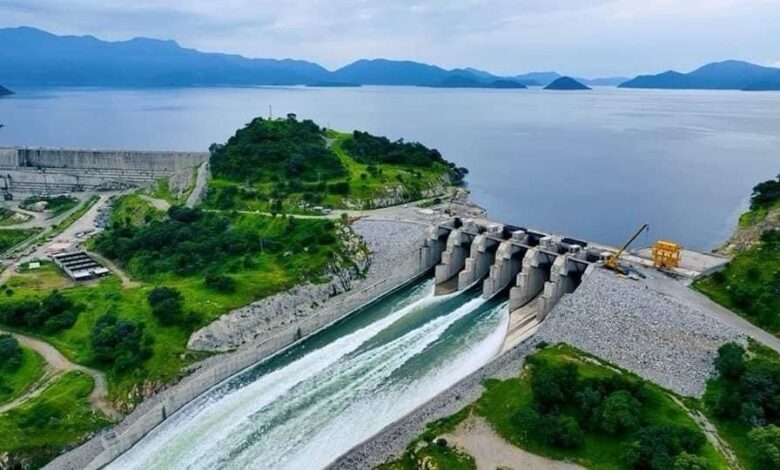
The Egyptian expert in water resources and irrigation, Dr. Abbas Sharaqi, stated that satellite images show the commencement of turbine operation at the Grand Ethiopian Renaissance Dam (GERD), with water now flowing toward Egypt’s High Dam.
In a post on Facebook on Thursday, Sharaqi explained that the continued rise in the Nile water level in Egypt may prompt authorities to open the Toshka Spillway, which remains closed to date. The Toshka Spillway is located in southern Egypt and is designated to receive surplus water in Lake Nasser behind the High Dam.
Sharaqi indicated that satellite images over the recent days showed the operation of some of the upper GERD turbines more than two months after the dam’s inauguration, while the two lower turbines remain completely shut down since mid-July.
Sharaqi noted that the Blue Nile’s yield currently ranges between 100 and 200 million cubic meters per day (/day), according to measurements by the Sudanese Ministry of Agriculture and Irrigation at the Ad-Diem station on the border with Ethiopia.
In contrast, the amount of water flowing into the GERD from Lake Tana and light rainfall is about . He explained that this difference in the amount of water reaching Sudan comes from the GERD reservoir, whose water level is now around 640 meters above sea level.
He clarified that the Toshka Spillway remains closed as of Thursday, but the coming days may see a change as the Nile River level in Egypt has continued to rise since last September.
Recently circulated rumors had claimed that Egypt opened the Toshka Spillway to receive floodwater from Ethiopia. However, the Egyptian government denied this, asserting that the incoming water was being absorbed by Lake Nasser and the Nile River channel, whose rising level inundated some lands and areas within the river’s restricted zone.
The Egyptian Ministry of Water Resources and Irrigation directed blame at Ethiopia, accusing it of recently operating the GERD in an “undisciplined manner.” It stated that Ethiopia suddenly released large quantities of water, causing direct damage to Egypt and Sudan, including unexpected seasonal floods that affected agricultural areas in Sudan and disruptions to the operation of the High Dam.




